You spend all summer tending your garden, waiting for that perfect harvest. But plenty of common vegetable garden problems and pests are waiting, too!
How to Identify and Fix Common Vegetable Garden Problems and Pests
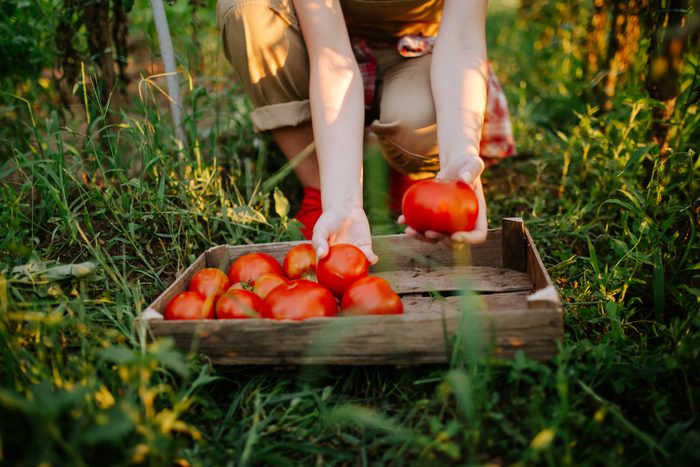
It’s inevitable. Every garden has issues that make you want to throw in the trowel. So many variables like temperature, rainfall, heat and humidity affect the way the garden grows and each one encourages certain, ahem, issues. No gardener comes out unscathed by one (or several) of these common vegetable garden problems and pests.
Look on the bright side though—once you learn how to identify and handle them, you’re much better equipped to intercept them at the first signs of trouble.
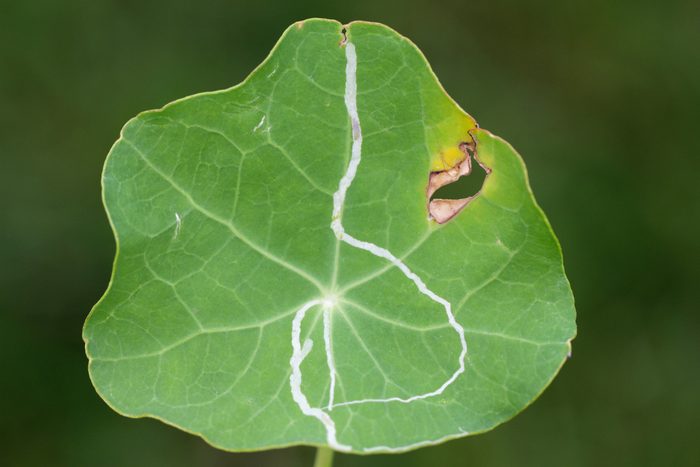
Leaf Miners
Common among leafy greens like spinach and chard, spinach leaf miners feed from the inside of the leaf. Adult leaf miners insert eggs into leaves where they hatch and feed, creating opaque mines or paths that eventually turn brown and kill the leaf tissue.
It’s not such a big deal on veggies like beets that are grown mostly for their roots, but they can be quite damaging to plants grown for edible greens.
Signs typically emerge on new growth. In mild cases, simply pinching out the affected leaves is enough to control the problem. For more established populations, it’s best to remove the plants and sow new ones in a different location. Spinosad is an effective organic pesticide option that prevents adults from laying eggs but doesn’t kill larvae that are feeding on plant leaves.
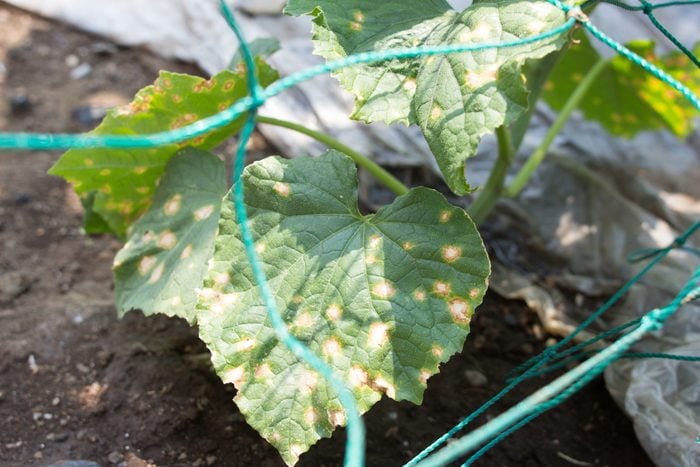
Downy Mildew
Small yellow spots are forming on the tops of your cucumber leaves and a quick peak of the undersides reveals a gray or purplish mold. Your plant has downy mildew.
Unlike powdery mildew, downy mildew isn’t a fungal issue. It’s more closely related to algae and like powdery mildew, it has a fondness for humid conditions. Organic treatments like Bonide Copper fungicide are a good option but not guaranteed to completely eliminate the problem. Prevention is your best line of defense.
Breeders are producing plants with resistance to downy mildew. When possible, choose plants with good disease resistance as indicated on the plant tag and follow planting and location recommendations. Water early in the morning, targeting the soil around the plant and not the plant, to ensure it has time to dry out before evening.
For severely diseased plants, it’s best to remove it from the garden. Better to sacrifice one plant for the benefit of all!
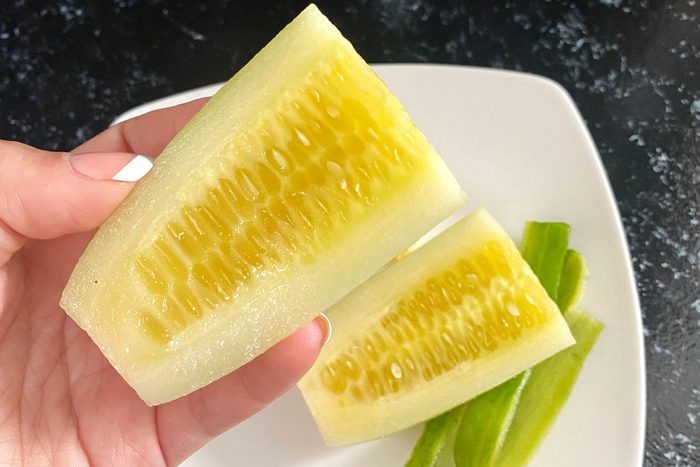
Yellow Cucumbers
You head out to harvest a cucumber—only to discover that it’s yellow inside and out. This common vegetable garden problem is usually the result of leaving cukes on the vine too long. The yellow skin and flesh indicate that the cucumber should’ve been picked long ago. Like zucchini, cucumbers seem to appear overnight, so it’s important to check plants regularly. You want to harvest cucumbers when they have dark green skin and are about six inches in length.
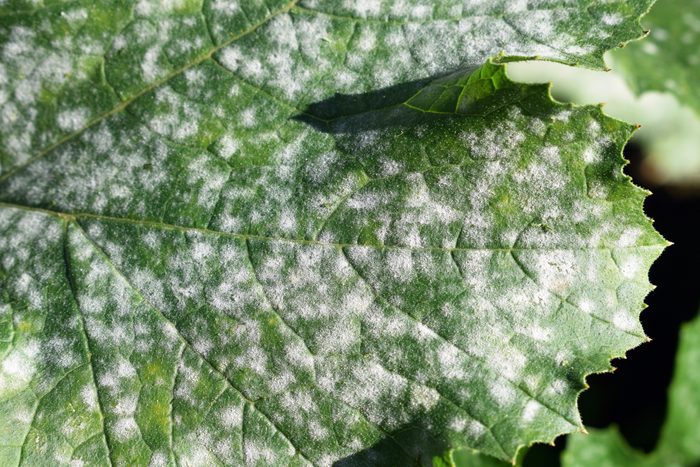
Powdery Mildew
One minute your zucchini plants look healthy and robust, but a few humid days later they look as if they’ve been chalk dusted. Your plants have powdery mildew, a very common fungal disease spread by spores blown from plant to plant.
It loves humid weather and thrives in gardens with low sunlight and poor air circulation. Powdery mildew is mostly cosmetic but it can cause severe leaf loss and weaken the plant. At the first sign of powdery mildew, remove the leaves and discard them. Never compost them! Spores will overwinter in the pile and persist in the garden. To limit the chance of spreading the infection, always disinfect your pruners before working in another part of the garden.
Susceptible plants include melons, squash, zucchini, cucumbers, peppers and tomatoes. When selecting plants, look for those with improved disease resistance. This should be on the plant tag. At planting time, be sure to maintain the recommended spacing for good air circulation and locate them in an area that will offer the necessary amount of sunlight.
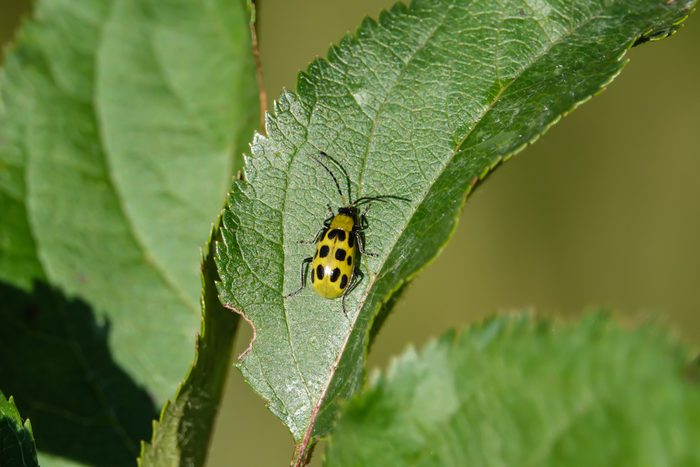
Cucumber Beetles
Your tiny cucumbers are breaking through the soil and small yellow insects are nibbling on the tender foliage. Three longitudinal black stripes or twelve black dots on their backs reveal their identity—cucumber beetles. They also have a thing for melons and squash.
Young plants are most at risk, especially when beetle populations are high, and may be completely defoliated without intervention. Striped cucumber beetles can carry bacteria that, upon entering a plant’s vascular system, causes a condition called bacterial wilt. It spreads rapidly and once infected, the plant can’t be saved.
Vigilance is key, especially when plants are small early in the season. Floating row covers applied in early to mid-June are an excellent way to keep beetles off your plants. Just be sure to remove the covers when flowers appear so bees can pollinate your crop.
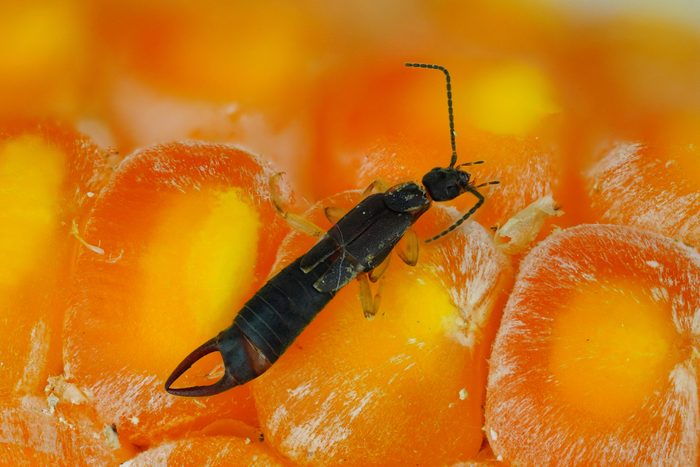
Earwigs in Corn
Corn has everything an earwig loves. Dense dark husks in which to hide and a plethora of silk to satisfy its voracious appetite. Add a damp environment, like your irrigated garden, and you could have an earwig wonderland on your hands. Yuck!
Without silk, corn can’t pollinate and pollination is crucial to kernel development. Observation is key. After all, it’s difficult to know what’s lurking in a corn husk and you often won’t know there’s a problem until it’s too late. Check around your corn stalks and if you see earwigs lurking, err on the side of caution with a little DIY trap.
To a low-sided can like a cat food or tuna can, add a half-inch of vegetable oil with a drop or two of fish oil and bury it in the garden so that the lip of the can is level with the soil. Check the can each morning, dump the contents and refill. Repeat until you are no longer catching earwigs.
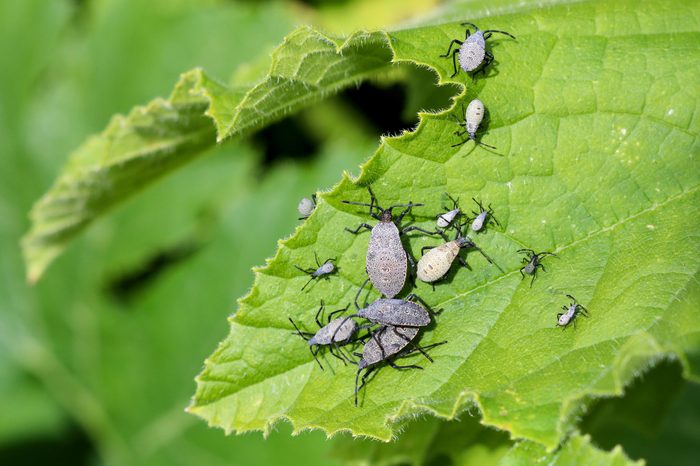
Squash Bugs
Your pumpkins were sprawling through the garden until sudden wilt took hold. A closer look reveals yellow lesions on the leaves, stems and vines. When you lift the leaves at the base of the plant, a hoard of flat-bodied gray bugs can be found hanging out where the old leaves touch the ground. You have squash bugs! They literally suck the life out of their host by piercing plant cells and extracting vital nutrients.
Squash bugs are difficult to control and floating row covers may be your best defense. The covers provide a physical barrier between the plant and its predator while allowing light to penetrate. The only problem is that they also shut out pollinators like bees which are necessary for fruit production. You have two choices—hand pollinate or remove the row covers for a few hours in the morning to allow bees to work their magic.
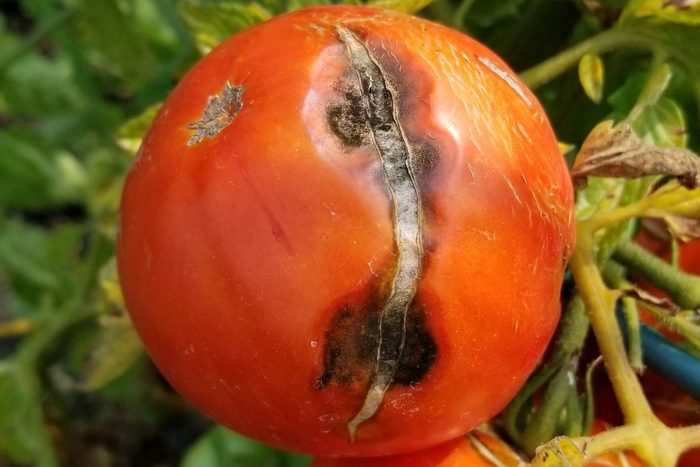
Split Tomatoes
You’ve prepared the soil, amended with compost and your watering game is second to none. But your tomatoes are splitting! What gives? Tomatoes split when the skin can’t keep up with the swelling fruit inside.
It’s the vegetable version of stretch marks and very common. The most common culprit is a sudden deluge of water following a long dry spell. Sometimes Mother Nature is to blame, other times the gardener. Consistency is key. A two- to three-inch layer of mulch will help retain moisture. Soaker hoses are a great way to ensure deep, even watering around your plants.
Consider planting crack-resistant varieties but be sure to monitor your tomatoes closely. Pick them immediately if they’re beginning to split and enjoy them. Just because it’s cracked doesn’t mean it’s inedible. If it smells sweet and the cracking is recent, slice off the ugly part and savor the taste of summer!
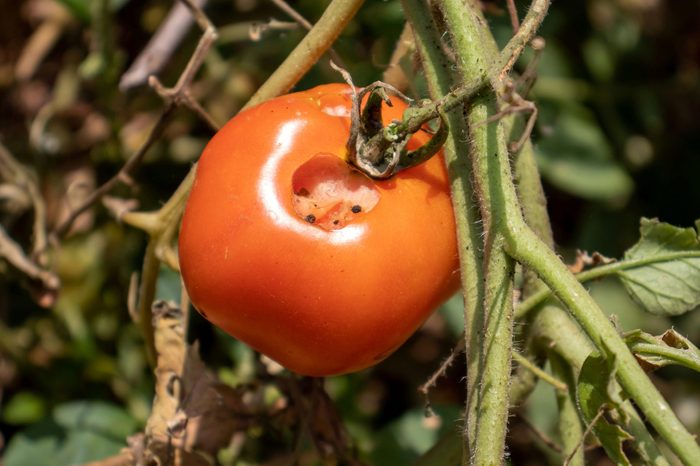
Holes in Tomatoes
Nothing’s more disappointing than a beautiful tomato that’s suddenly developed a black hole at the base of the fruit stem. It resembles a cigarette burn and is likely the work of the tomato fruitworm. Slice open the fruit and you may be greeted by the worm/caterpillar that’s tunneled its way through the fruit, turning the interior into decaying mush.
Sanitation is the best way to handle tomato fruitworm. As soon as signs of its presence appear, pick the fruit and dispose of it so the worm can’t complete its life cycle. Crop rotation, which involves changing the location of a particular crop from year to year, is a great way to lessen the chance of repeat pest issues in the garden.
Be sure to check out these other tomato-growing tips.
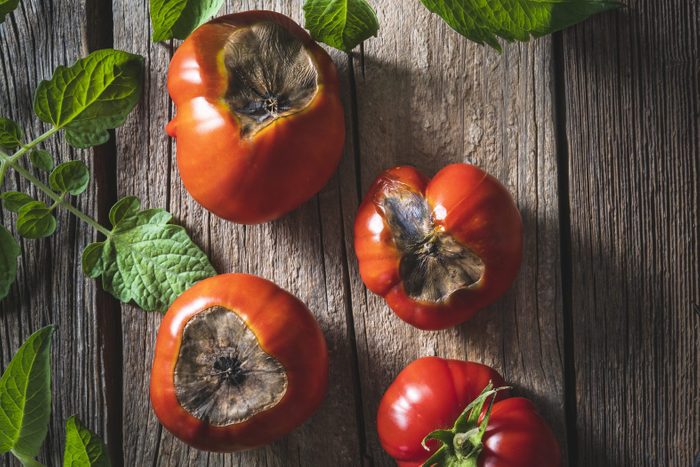
Black Spot on Tomatoes
You’re on the verge of harvesting your first tomatoes of the season when you discover mushy black spots at the base of many of the fruits. Your tomatoes have blossom end rot and it’s most common on the earliest maturing fruit. The condition can be caused by wide fluctuations in soil moisture that inhibit the plant’s ability to absorb calcium. Additionally, the use of a high nitrogen fertilizer may also be to blame.
At the first sign of blossom end rot, remove the affected fruits so that the plant can put its energy into the remaining fruit. Water weekly. Tomato plants are happiest with about an inch of water applied to the root zone. A 2- to 3-inch layer of mulch will help with moisture retention.
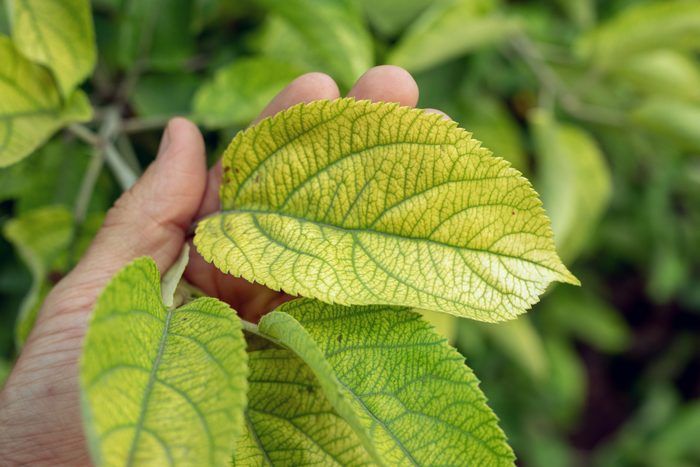
Yellow Leaves
Your pepper plants are developing a yellow discoloration in the leaf margins while the veins remain green. All or part of the plant may be exhibiting this symptom often found among plants in compacted soils or those with high pH. Your pepper plant has chlorosis due to a lack of chlorophyll. Iron chlorosis is the most common deficiency, but zinc and manganese are possible too. In severe cases, the entire leaf will turn yellow and die. The affected branch may die back or the entire shrub will succumb.
A soil test is the gardener’s window into soil chemistry and the only way to know exactly what your soil lacks. Contact your local university extension office for information on soil labs in your area.
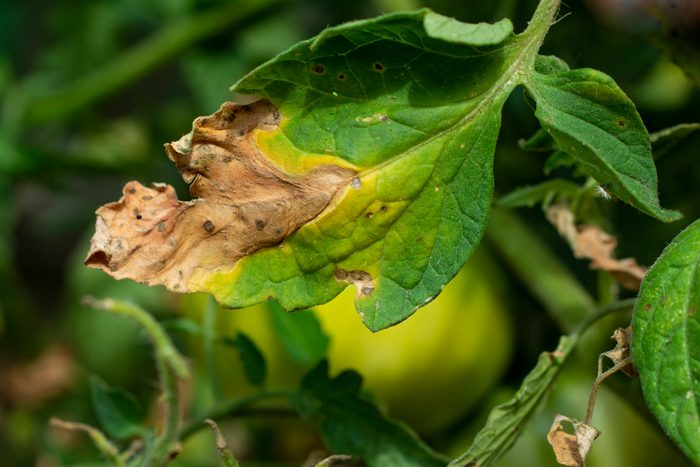
Late Blight
Potato plants have developed large dark brown blotches on the leaves and the plant looks as though it’s been hit by a hard frost. But it’s July! Late blight is likely to blame and totally weather dependent, favoring cool humid weather to quickly spread spores on the wind. Once airborne, entire tomato and potato crops can fall victim in a matter of days. The skin of infected fruit develops a dry brown rot with powdery white spores.
Once plants show signs of blight, it’s best to remove them from the garden. Avoid the compost pile and toss it right in the garbage.
Observation and careful attention to weather conditions are key to getting a jump on late blight. A preemptive fungicide application when humid weather conditions favor the emergence of blight is your best line of defense.
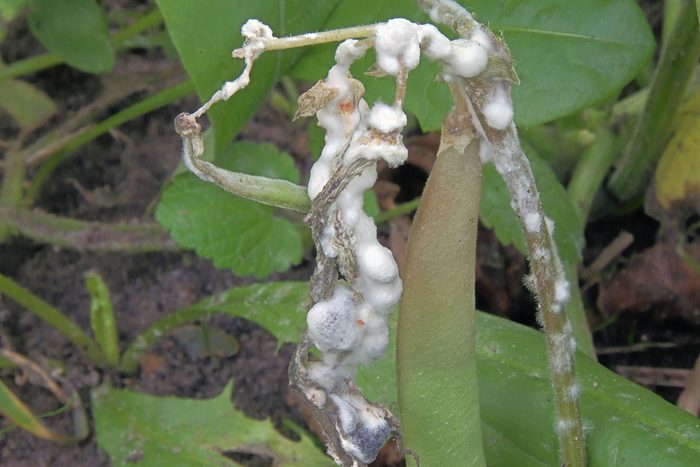
White Mold
Splotches of wet-looking rot have formed on the leaves of your bean plants and are enlarging to form a mass of moldy growth. You may also see signs of it on the pods and stems where a dense cottony growth has developed. Your plants have white mold, a soil-borne fungus that thrives in humid conditions. At the first sign of white mold, remove plants. Good air circulation is important so be sure to space your plants accordingly to allow foliage to dry out by evening.
An approved fungicide sprayed thoroughly over all parts of the plant is effective but must be timed perfectly to thwart the fungus. Apply when one or more flowers have formed, making certain to cover all the blossoms and buds.
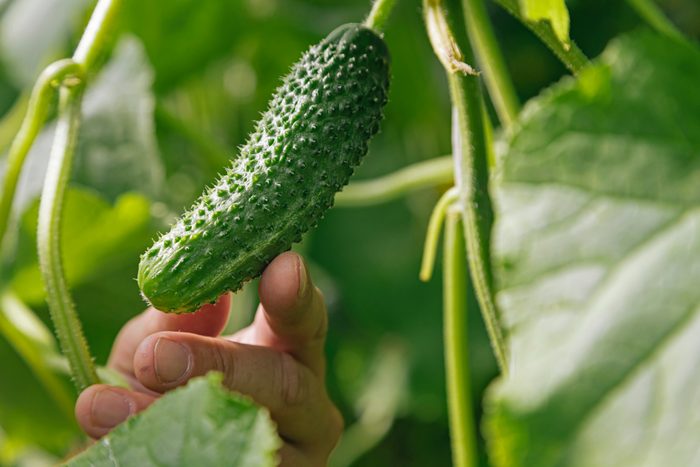
Squishy Cucumber Ends
You’ve anticipated homegrown cucumbers all summer only to discover the ends of your prized cukes are turning to mush. What’s more, they’re still on the vine! What gives? That squishy feeling is a good sign that you waited too long to harvest your cucumbers and they’ve begun to rot.
When planting cucumber seeds, pay attention to the information on the back of the seed packet. The “days to maturity” refers to the average number of days a plant requires after planting to produce ready-to-pick fruit. For direct-sown seeds, counting starts the day you plant the seed. The day you transplant seeds sown indoors to their permanent outdoor digs is day one.
Still not sure? Consult the seed packet for the approximate size or length of the fruit when ready to harvest and compare that to your fruit. If your days to maturity and fruit size come close to the packet estimates, start picking!
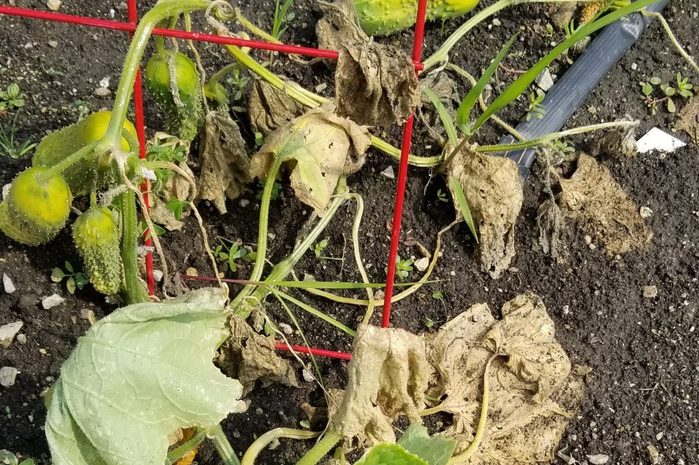
Dead Cucumber Vines
Let’s assume you’ve been on top of watering and your cucumbers were looking good until suddenly they shrivel and die. Healthy vines one day, dead ones the next is how this pathogen operates. Your cucumbers likely have bacterial wilt transmitted by cucumber beetles. There’s no cure for this cucumber disease and plants should be removed from the garden immediately to prevent it from spreading to other parts of the garden. Muskmelon, pumpkin and squash are other candidates for the disease.
Your best bet is to plant bacterial wilt-resistant cucumbers like ‘County Fair,’ ‘Saladin’ and ‘Salad Bush.’ All are prolific producers with that fresh-from-the-garden cucumber flavor.

Mites
Your bean plants are developing a yellowish stippling on the leaves with a fine webbing that stretches between them. You can’t see any insects but the signs reveal you have a spider mite infestation. You’ll need a magnifying glass to see this minute sucking insect that favors the nutrients in bean, tomato and cucurbits (squash, melon and cucumber).
Before you reach for an insecticide, grab the garden hose and spray the plants. Spider mites release easily and this may be all that’s needed to curb the issue. For plants that have yellowed, weakened and are non-productive, remove them from the garden.
A healthy plant is a lot less appealing to insect infestation and a good watering and fertilizing schedule will likely keep your plants stress (and mite)-free.


















